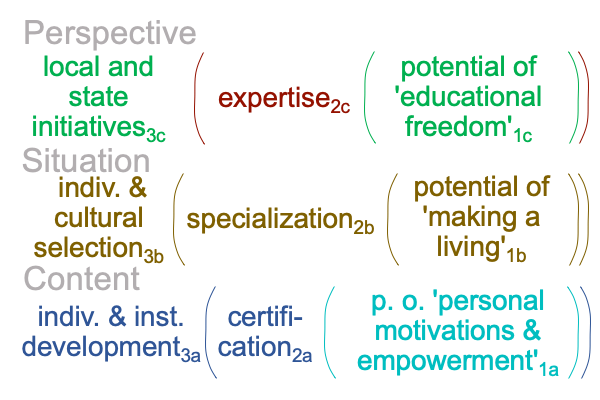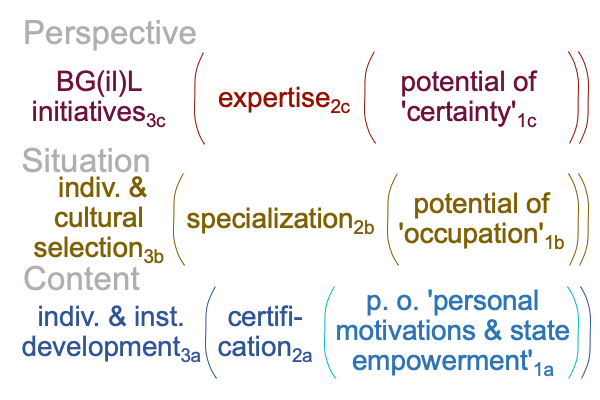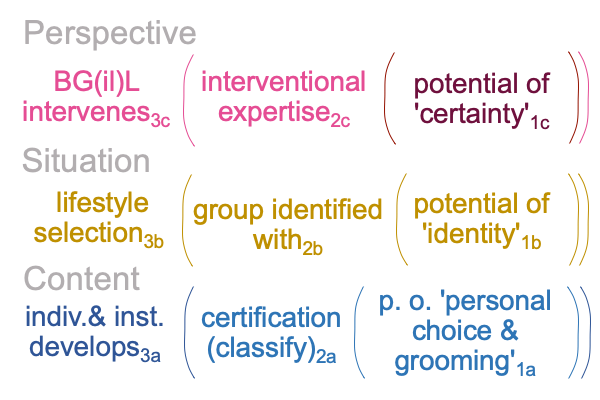0050 Surely, Gad Saad, Heather Heying, Bret Weinstein and Betsy DeVos address an unanticipated historical moment,marked by a failure of the Federal Department of Education to maintain the virtual nested form of (il)liberalism1cbringing jobs1b into relation with the possibility that individuals are motivated1a to become certified2a as specialists2bwho will then fill those jobs1b. The student loan crisis is a symptom of that failure. Students are not getting the jobs1bthat they are specialized2b in, indicating a failure of the federal educational system3b.
0051 In contrast, Betsy DeVos proposes educational3c freedom1c.
Her proposals alter the ongoing BG(il)L three-level paradigm.

Indeed, these are just the beginning.
0052 Federal bureaucrats counter with BG(il)L initiatives2c that promise certainty1c, rather than the uncertainty that they rhetorically associate with freedom1c.

0053 At the same time, a faction within the Federal Department of Education wakes up. They see that the central government is no longer interested in just regulating the organization tier. It wants to control the society and individual in community tiers as well.
Plus, the central government is catastrophically failing in its control of the economic sphere, as witnessed in the fact that (1) certified individuals are saddled with enormous amounts of debt that they cannot seem to pay off and (2) one of the (if not the) largest assets of the federal government consists in student loans.
This faction becomes “woke”, initiating a substantial overhaul of the BG(il)L interscope on the basis of three intellectual movements: social justice, critical theory and social constructivism.

0054 None of these interscopes are fixed. They are like pictures of a chessboard during certain moments in a tournament. At the same time, they suggest what is at stake. If federally financed education is not about training for jobs1b, then is education about being groomed for an identity1b?
The game plays out in the theater of politics, just like Shakespeare’s King Lear plays out in a conventional theater. Actors speak their lines, hoping to convince a naive audience that their stories are real. But, the real drama goes on in the minds of the audience, who are constantly asking themselves, “What the hell is going on?”
